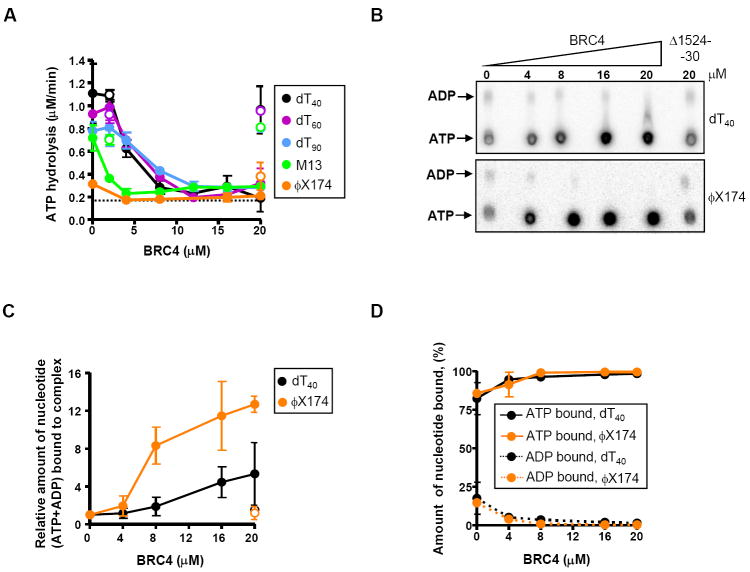Figure 2. BRC4 inhibits ATP hydrolysis and permits accumulation of ATP-bound RAD51-ssDNA filaments.
(A) BRC4 reduces the rate of ATP hydrolysis by RAD51. RAD51 (3 μM) was incubated with increasing concentrations of GST-BRC4 (filled circles) or the control peptide GST-Δ1524-30 (open circles), as indicated, prior addition of dT40 (●), dT60 ( ), dT90 (
), dT90 ( ), M13 ssDNA (
), M13 ssDNA ( ), or ϕX174 ssDNA (
), or ϕX174 ssDNA ( ), and further incubated for 1h in the presence of 0.5 mM ATP and 4 mM Mg2+. The dashed line represents the DNA-independent rate of ATP hydrolysis by RAD51 (~0.2 μM/min). (B) Nucleotides bound to purified nucleoprotein filaments as a function of BRC4 concentration as measured by TLC. (C) Amount of total nucleotide (ATP+ADP) bound to the RAD51-ssDNA complex formed with either dT40 (black circles) or ϕX174 ssDNA (orange circles) in presence of GST-BRC4 (filled circles) or GST-Δ1524-30 (open circles), relative to the amount in the absence of BRC4. (D) Percentages of ATP (solid lines) and ADP (dashed lines) in the RAD51 nucleoproteins filaments formed on dT40 (●) or ϕX174 ssDNA (
), and further incubated for 1h in the presence of 0.5 mM ATP and 4 mM Mg2+. The dashed line represents the DNA-independent rate of ATP hydrolysis by RAD51 (~0.2 μM/min). (B) Nucleotides bound to purified nucleoprotein filaments as a function of BRC4 concentration as measured by TLC. (C) Amount of total nucleotide (ATP+ADP) bound to the RAD51-ssDNA complex formed with either dT40 (black circles) or ϕX174 ssDNA (orange circles) in presence of GST-BRC4 (filled circles) or GST-Δ1524-30 (open circles), relative to the amount in the absence of BRC4. (D) Percentages of ATP (solid lines) and ADP (dashed lines) in the RAD51 nucleoproteins filaments formed on dT40 (●) or ϕX174 ssDNA ( ).
).

